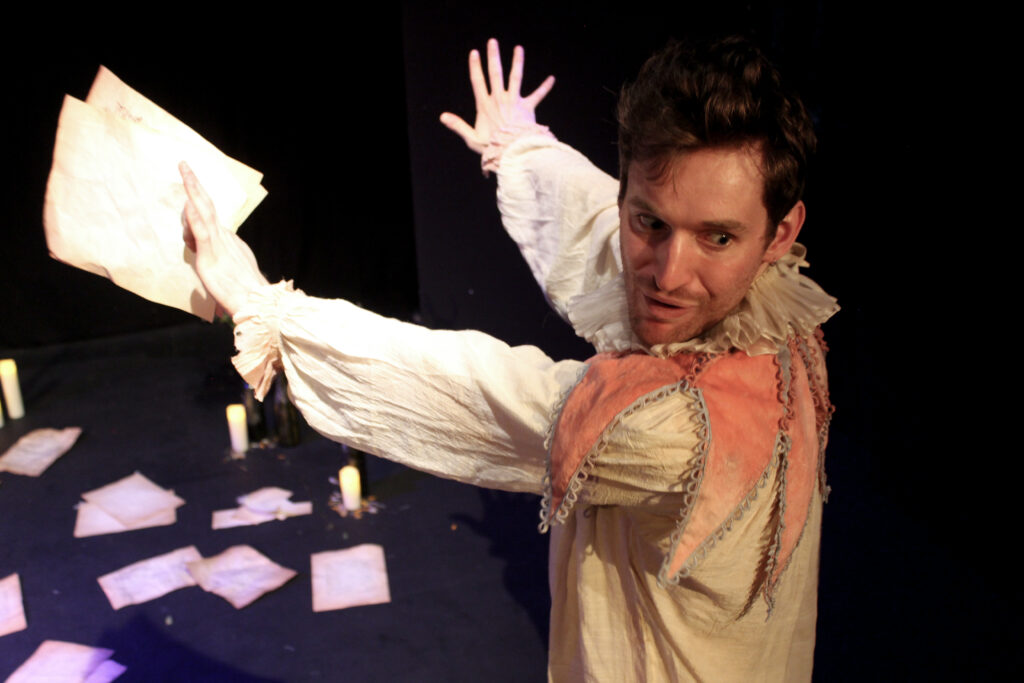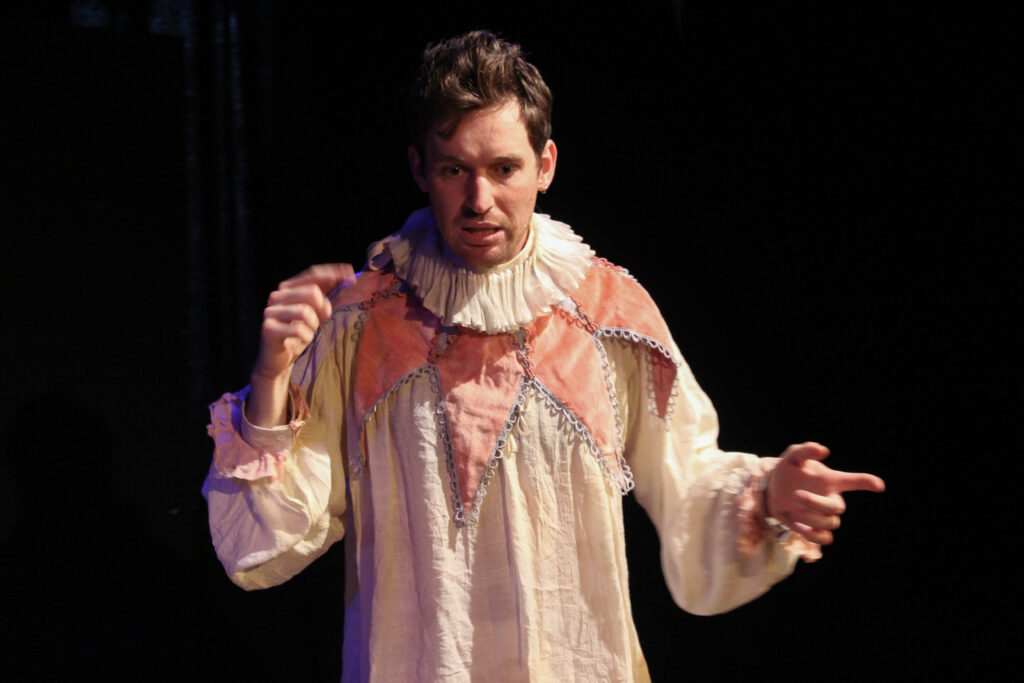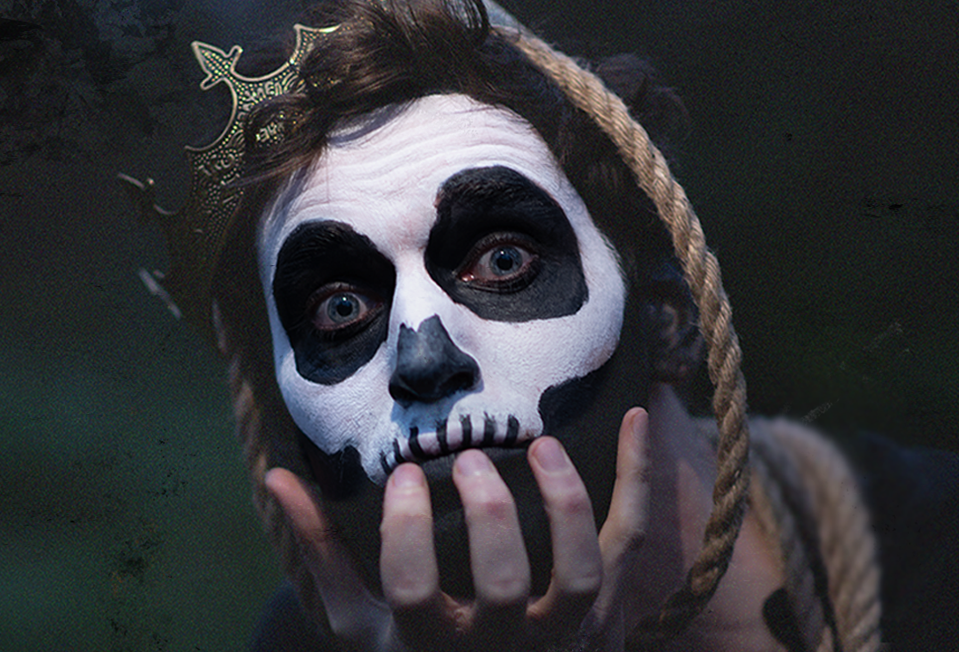Hamstrung – The Glitch, London
In Hamstrung, George Rennie gives voice to Hamlet’s most famous skull, transforming Yorick into a lively, tragicomic narrator of his own tale.

Credit for lead image: Luka Booth.
In Purgatory with a Player: The Clever Conceit of Hamstrung
In Hamstrung, George Rennie reclaims Yorick (the long-dead fool of Hamlet fame) as something more than a grim punchline or discarded skull. With charm, mischief and not a little melancholy, this hour-long solo piece at The Glitch sees Yorick’s spirit somehow return to a liminal space where performance and selfhood blur. Not that he seems to know he is a spirit. It’s an elegant conceit. As Yorick slips back and forth from this candlelit purgatory into the narrative of Hamlet, he meddles with the play’s fatal machinery. Yet somehow this very meddling is what drives the action. Despite Yorick’s intentions to delight and entertain, the deaths still pile up, the tragedy grinds on. Nothing can divert the play’s brutal inevitability.
For the Shakespeare-literate, the show offers witty pleasures – familiar quotes, a goat named after Fortinbrass – but Rennie and director Lisa Millar wisely keep the piece open to newcomers. On the night I attended it ultimately mattered little that none in the audience could recall the name of Polonius’s son. You don’t need to know Laertes to recognise the emotional thread of an old clown wrestling with his art, his desire, and his inability to escape himself. This is not merely a clever spin on the text in the manner of Rosencrantz and Guildenstern Are Dead. It’s a sadder, sharper reflection on theatrical ambition, queer repression, and the exhaustion of those who live to amuse others. Yorick, once the King’s delight, now performs for strangers. Poor Yorick indeed.

A Fool’s End: Loss, Performance and Self in Hamstrung
Rennie’s performance is big-hearted and entertaining, deftly balancing physical humour with flashes of real feeling. He plays Yorick as part early modern clown, part jaded comic in the style of a tired stand-up, tossing out puns and dancing jigs while slowly revealing the desperation beneath. Audience interaction is central (remember this when deciding whether to take up the initial audience instruction). But the manipulation is gentle, coaxing rather than confronting. Millar’s direction shapes this well, pacing the piece towards an emotional crescendo with real resonance. There’s a lovely mirroring in the space itself: The Glitch, itself a fairly liminal basement space, becomes a shadow of Elsinore, of the theatre, of the afterlife.
But what lingers most is the cruelty of Yorick’s fate. Trapped in life in endless performance, it seems he cannot lay his act – or himself – to rest. This is purgatory not just for a soul but for a performer who cannot stop playing the fool. The final moments suggest there may be no release: the fool’s dance goes on. Beneath the gags and the comic sparkle lies something darker. A meditation on the cost of artifice, the price of being the one who always entertains. The queer subtext (of concealment, longing, self-erasure) is never laboured but feels quietly integral, woven into Yorick’s lament for a life lived behind the mask of jest.
For all this, Hamstrung remains swift, funny, and briskly theatrical: a minor miracle in an hour! If the text feels crowded with ideas, that’s part of its richness. Rennie offers no simple escape for his fool.
Salterton Arts Review’s rating: 4/5
Hamstrung on until 16 June 2025. More info and tickets here.
Trending
If you see this after your page is loaded completely, leafletJS files are missing.

